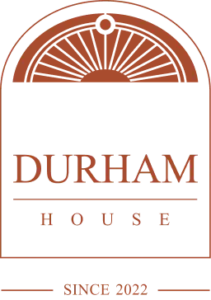Back in the late 2000s, I started a not-for-profit Western Martial Arts school just outside the heart of Melbourne. It wasn’t the only one of its type. Re-enactment groups and martial arts schools had been operating in Melbourne for a while, but this one was different. While those adhered to specific styles and rule systems, my club was intended to support all of them – teaching the underlying theories of martial arts and swordplay. In other words, teaching basic physics and applying it through martial arts.
There was a problem though. At the time, I was a poor university student, and so were most of my students. While I had some qualifications aplenty, that didn’t necessarily amount to much when it came to finances. And boy did we have some costs. Buying or building training swords for new students? That cost money. Spare protective gear for new students? Money. Hall hire costs? Money. And of course, while I was running the show I didn’t mind not taking an income, but eventually we’d get more qualified training officers and a committee, and they would need to get paid for their time. We had to find a way to raise money so that we could get off the ground, and we needed to find a way to do it fast.
Government Grants and Business Support
Our first option was naturally to look to the government. New Business support and government grants were an option we could pursue and so we took it upon ourselves to pursue it. Unfortunately, these started to run into some problems. Firstly, Western Martial Arts weren’t particularly well recognised in my home state of Victoria – and it wasn’t just because most people didn’t understand what the term “Western” meant in that context. Victoria at the time had the strictest sword laws in the country – and some of the strictest in the world at the time – and the number of legal loopholes required just to get our students to be permitted to play with swords was something else. The Victorian government had started to close in on hobbyists and collectors, and even older insurance methods were becoming questionable – after all, was this a sport that required sporting insurance or a hobby that only required personal insurance?
Another issue was simply the one who signs the paperwork. While the option for grants, business support and loans were on the table, many of them required minimum employee numbers, and as a small not-for-profit that wanted to stay rooted in the community, this sort of regulation was a problem. Many who were interested in learning enough to take on the role of teacher didn’t also want to take on the role of admin, and were concerned about being liable for costs if something went wrong – a business venture is a risk after all – and many of them had plans after university and didn’t want to be locked down into developing this community project. Ultimately, we decided to only apply for smaller grants, things that didn’t require long-term commitments or major loans, and look for our funding to come from elsewhere…
Club Social Activities: Trivia Nights
This began our tradition of running a trivia night every 4-6 months. As a rule, it would be historically themed, the best jokes were made with acceptable answers, and we had it at a pub so everyone could drink and enjoy each other’s company. It was a great time, our students advertised it to their friends, the pub let us use the space for free, and charging a little money for the entry fee allowed us to get funds fairly quickly that could be funnelled straight into our martial arts club. Not only this, but as many of our students came from historical backgrounds many of them were invested in writing questions – or in reading the answers so they could get the first chance to laugh at the funny answers. Our community group was thus being funded by a low-cost community activity, and with three of them a year it really helped keep the lights on – literally.
But trivia nights weren’t the only option here. Alongside trivia nights we could have explored other options like community bake sales, meat tray raffles, or even skill-sharing workshops. After all, who doesn’t want to learn a little something about making armour or a sword? Or come together for a shield-building workshop? And while these were tried for us the most successful was the trivia night as it was something the whole community came together to make flourish. But there was another option that was perhaps our biggest money-maker of all.
Sausage Sizzle
Although famously associated with Bunnings Warehouse, this isn’t the only place for it, in Australia one of the most popular ways to make money as a small community group is to get your team together, go down to Bunnings and bbq sausages for paying customers. For only a small fee to purchase the equipment and acquire the ingredients – and approval from the local business or government you’re operating in front of – these small fundraising operations are a magnificent way to get the money together for a small community group. And you get to eat some sausages yourself afterwards, what’s not to love?
For our group, these strategies were more than enough to get us up and running. So if you’re looking for ways to raise money for your community group or not-for-profit enterprise, maybe try some of these? Or who knows, maybe come up with something else that brings your team together in a way that only your particular set of skills can. Best of luck, and above all, keep up the good work!












